Live Wires at Death Valley
Barney and Sue Go Solar
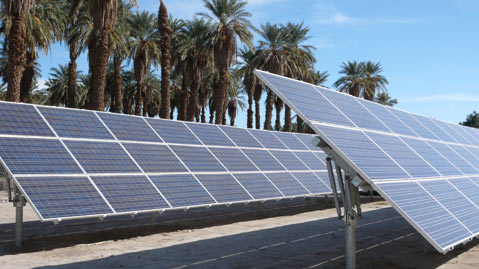
Sun Power: How strong is the sun in Death Valley National Park? Answer: At least strong enough to energize four acres of photo-voltaic solar panels to the tune of one megawatt. This may not sound like much, but the Furnace Creek Inn-Ranch area gets 30 percent of its electric power via these silent un-polluters.
Over 30 years, the system will eliminate more than 284,000 tons of pollutants that contribute to global warming, acid rain, and smog, according to Xanterra management, which operates the two resorts. Solar power is fed directly into the regional grid, not to batteries.
Eyebrows were raised when Sue and I announced at the coffee shop that we were heading for this 3.3-million-acre rock pile.
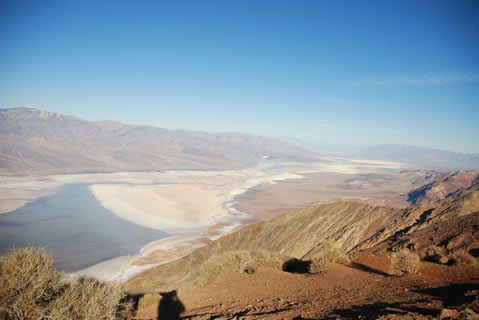
To them, even if it’s the largest American national park outside Alaska, it’s an ugly place where you could die in the 115-degree summer heat. Actually, tourists flock here for the magnificent display of spring wildflowers, known throughout the world; to hike the badlands and bizarre rock formations; and to play golf in reputedly the world’s lowest (214 feet below sea level) golf course.
Foreign tourists, forever fascinated by tales of the Old West, have long braved the summer heat. After the September 11, 2001, attack, foreign travel dropped off, but now they’re back.
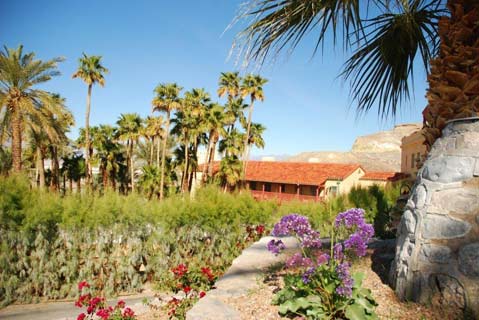
Americans seem to come in three schools: RV-motorcycle-Ma-and-Pa-Kettles in jeans are one grouping; adventurous hikers a second. Both of these types tend to stay at the affordable Furnace Creek Ranch, with its swimming pool, horseback riding, country market, and restaurants.
Then there are the golfers, a distinct cultural group who can be found clustered around the 19th Hole beer-and-burgers joint next to the pro shop. From its raised counter, Sue and I gazed down the level green fairway—did you think it would be sand?—at the graceful date palms. (The Ranch was once a date plantation. They’re no longer harvested; coyotes gobble them when they fall.) The solar array is just beyond the course to the left.
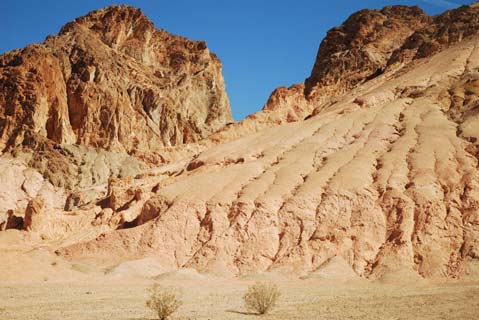
Some opt for luxury up the hill at the 1927 Furnace Creek Inn, a lovely spot for a drink, on the patio surveying the valley below and the long range of Panamint Mountains (snow-capped when we were there recently), topped by 11,000-foot Telescope Peak. Then there’s Scotty’s Castle, at the north end of the valley, tourist trap to some, to others an opulent mansion in the middle of the desert, with a colorful history.
Even if you’re not staying at the Inn—it was full so we were in the comfortable motel-like units at the Ranch—you should drive up for a look-see, a sunset drink, and or perhaps a splurge dinner.
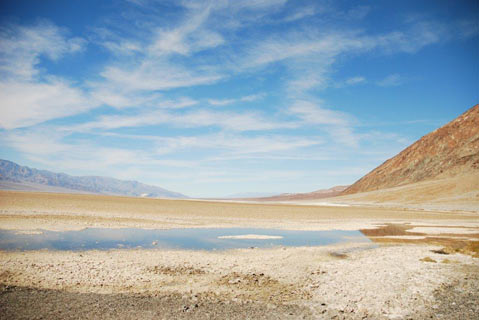
We were greeted by chef “Mic” Hanson, whom we met on a visit a few years ago. The Muscovy duck, with a delicious habanera-Mandarin glaze ($28.25), was the best I’ve ever tasted. (And probably the most expensive.) Reservations a must.
The Inn closes in mid-May, re-opening in mid-October. The Ranch is open year-round.
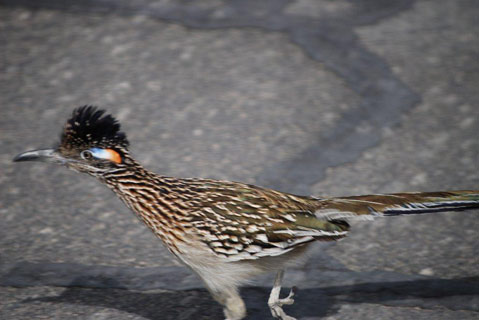
In three days, we spotted as many coyotes, one of whom wandered into an outdoor nature talk outside the Visitor Center. He was a handsome, healthy-looking critter, nourished maybe from the dates or more likely forbidden handouts at the nearby campground. As he stared at us, a small dog began yapping furiously, so Mr. Coyote trotted off.
Sue scooted off with her camera. The coyote scooted faster but she was able to get good shots of a colorful roadrunner. And we found tiny, famous pupfish swimming in Salt Creek. They somehow survive the arid summers when the spring dries up. These rare fellows only live a year. The valley is also home to rattlers, scorpions, and black widows.
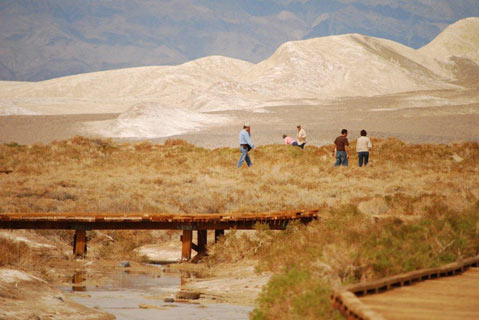
Among the most popular spots for visitors are Zabriskie Point, a lookout just a short uphill walk from the parking lot near Furnace Creek; Dante’s View, reached by a winding drive to a parking lot 5,475 feet above the valley and offering a breathtaking panorama; and Bad Water, at 282 feet below sea level the lowest point in the nation. If you have time, stroll out to the giant sand dunes near Stovepipe Wells. The ever-changing light makes for marvelous photos.
Good advice: Make sure your vehicle is in good shape. There’s gas at Furnace Creek. It doesn’t hurt to fill up every morning. Steer clear of the hazardous old mines.



